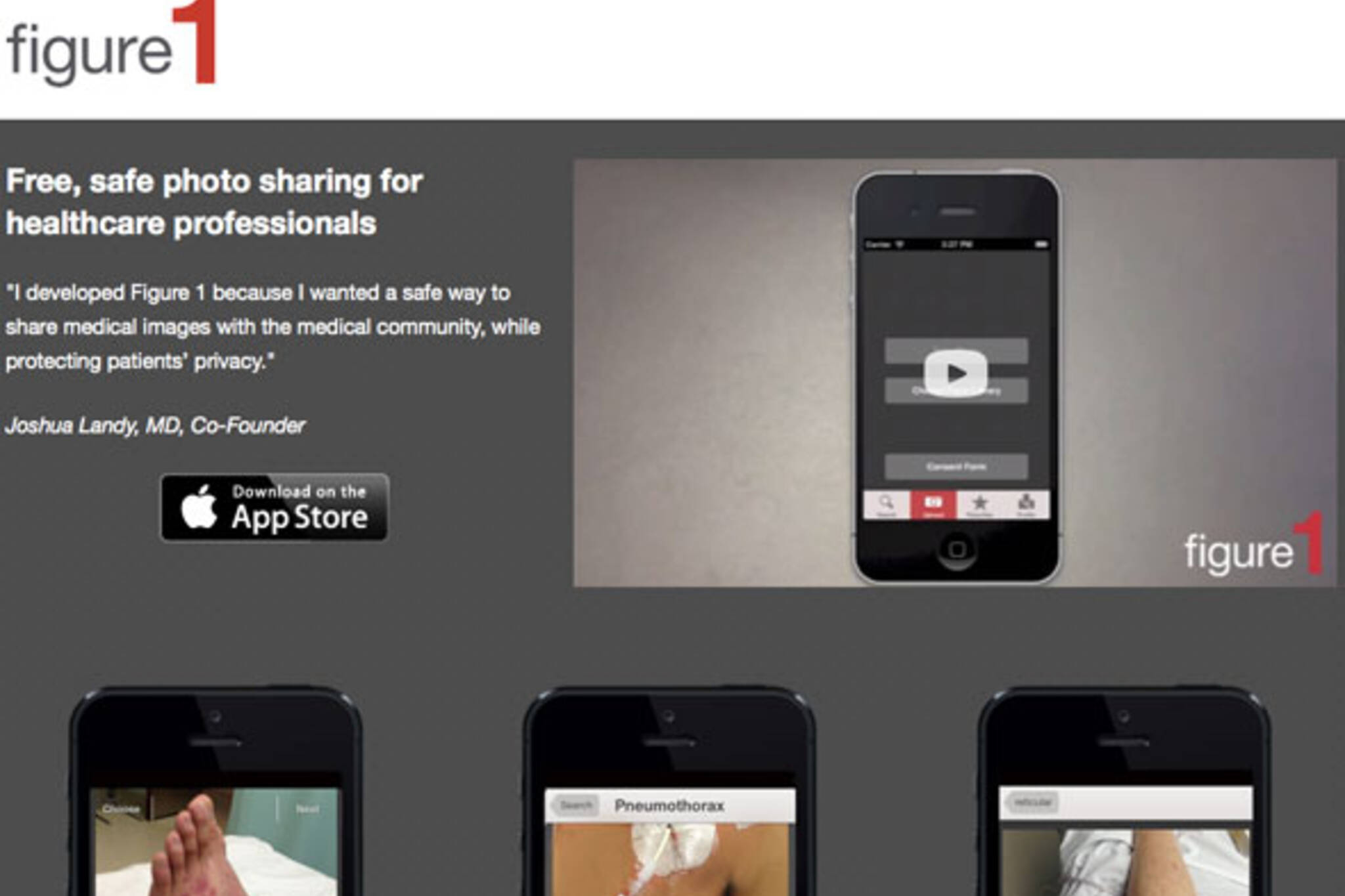
Get to know a Toronto startup: Figure 1
With the amount of foodstagramming and selfies filling up our activity feeds, sharing has been integrated into nearly every aspect of our life. Although certain people feel their lives are more shareable than others, the increase in people's openness to share personal information seems to be on the rise.
If you take a trip to your local doctor's office or hospital, the amount of sharing might look quite a bit different than your twitter feed. Due to the sensitivity of the information within the medical community, privacy concerns are always a top priority compared to openness.
Hoping to encourage the medical community to share in a safe and secure way, the Toronto based team at Movable Science recently launched Figure 1. Serving as a platform that allows healthcare professionals to take pictures of patient conditions, remove the identifying details, and upload the photos to a central database for discussion with their peers, the team feels that Figure 1 has the ability to positively influence patient care locally and eventually around the world.
I had the opportunity to sit down with the Figure 1 team, who is based out of the Ryerson DMZ, and learn about the positive changes they are hoping to make within the Toronto medical community.
Figure 1 sounds interesting, where did the idea come from?
One of our founders, Dr. Joshua Landy, came up with the idea for Figure 1. He's a physician here in Toronto practicing in critical care and internal medicine and he's been involved in medical education and mobile health research.
In the ICU, many of his patients need to see multiple specialists in a short period of time, and their conditions change rapidly. Part of his daily work flow is to keep the team of specialists up to date about their shared patients, so the idea was partly born out of his desire to improve that sharing process.
He also noticed that many physicians collect images of interesting or representative cases on their phones and share them with small groups of colleagues. Figure 1 was designed to provide not only a privacy-safe way of sharing these images, but also a way to harness thousands of educational assets for medical learning.
How does Figure 1 work?
Healthcare professionals take pictures of patient conditions and remove the personally identifying details. The images are tagged by condition and shared with either a small group of users or the entire Figure 1 community. A medical discussion often springs from the image, surrounding treatment actions, what lead to a diagnosis, and more.
Who can use Figure 1? Is it only for Doctors?
Before we launched, we expected that people in visual specialties (like dermatologists and radiologists) would find Figure 1 most useful. But we've been surprised and excited to see people from many different areas of medicine that we didn't expect. We have seen everything from physician assistants to medical students, pathologists and even dentists getting involved. It's exciting to see all these healthcare professionals sharing their specific expertise with one another.
What incentive do patients and doctors have to use Figure 1?
Sharing images is something that healthcare professionals have already been doing via text and email. We wanted to make it easy to remove the identifying information, so that the process could be safer for doctors and patients. At the same time, not everyone who joins Figure 1 uploads images, and from many users, we hear that viewing and discussing the images alone is really valuable for their ongoing medical education.
What are your thoughts on the privacy concerns?
We realize that we're operating within a sensitive area, so we've gone to great lengths to ensure patient privacy is protected. Photos with identifiable features are not allowed in the app and we offer tools to remove them like an automatic face block and a simple swipe feature to remove other identifying information. There's also a consent form that the patient or their representative can sign in the app. If a user does mistakenly upload something with personally identifiable information in it, we monitor the database and flag those images. Other users can also flag anything they have concerns about. Our goal, and the goal of the Figure 1 community, is to protect the privacy of the patients who are featured, not to identify them.
How do you think Figure 1 will improve patient care?
Our hope is that this conversation around medical images is just one part of using technology to keep doctors connected and informed. We think that educated doctors save lives and that healthcare should embrace mobile interactions between doctors. There are so many advancements in the area of mobile health, and we personally think this field will rapidly and significantly improve patient care.
Would you want your doctor using Figure 1? Let us know in the comments below.
Latest Videos
Latest Videos
Join the conversation Load comments







